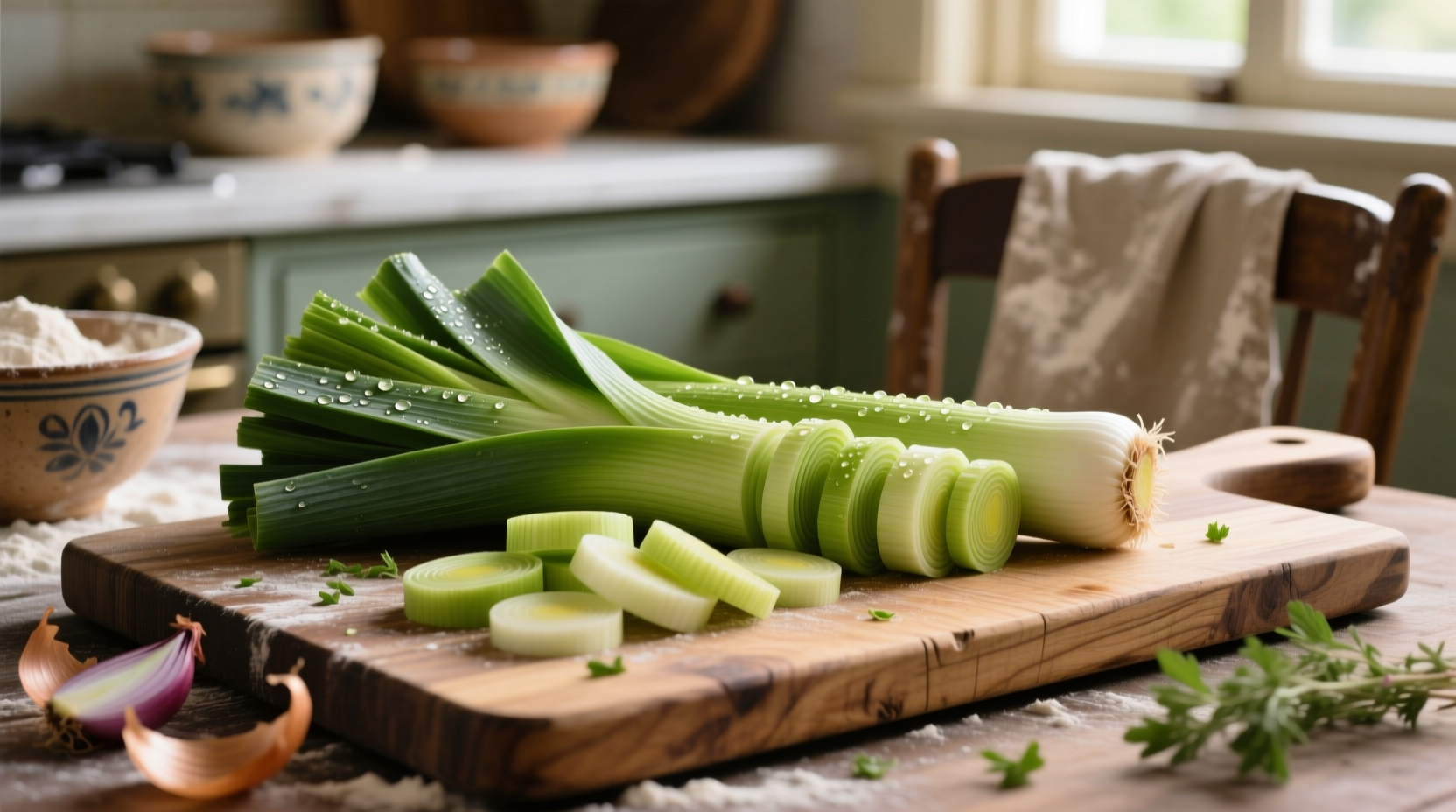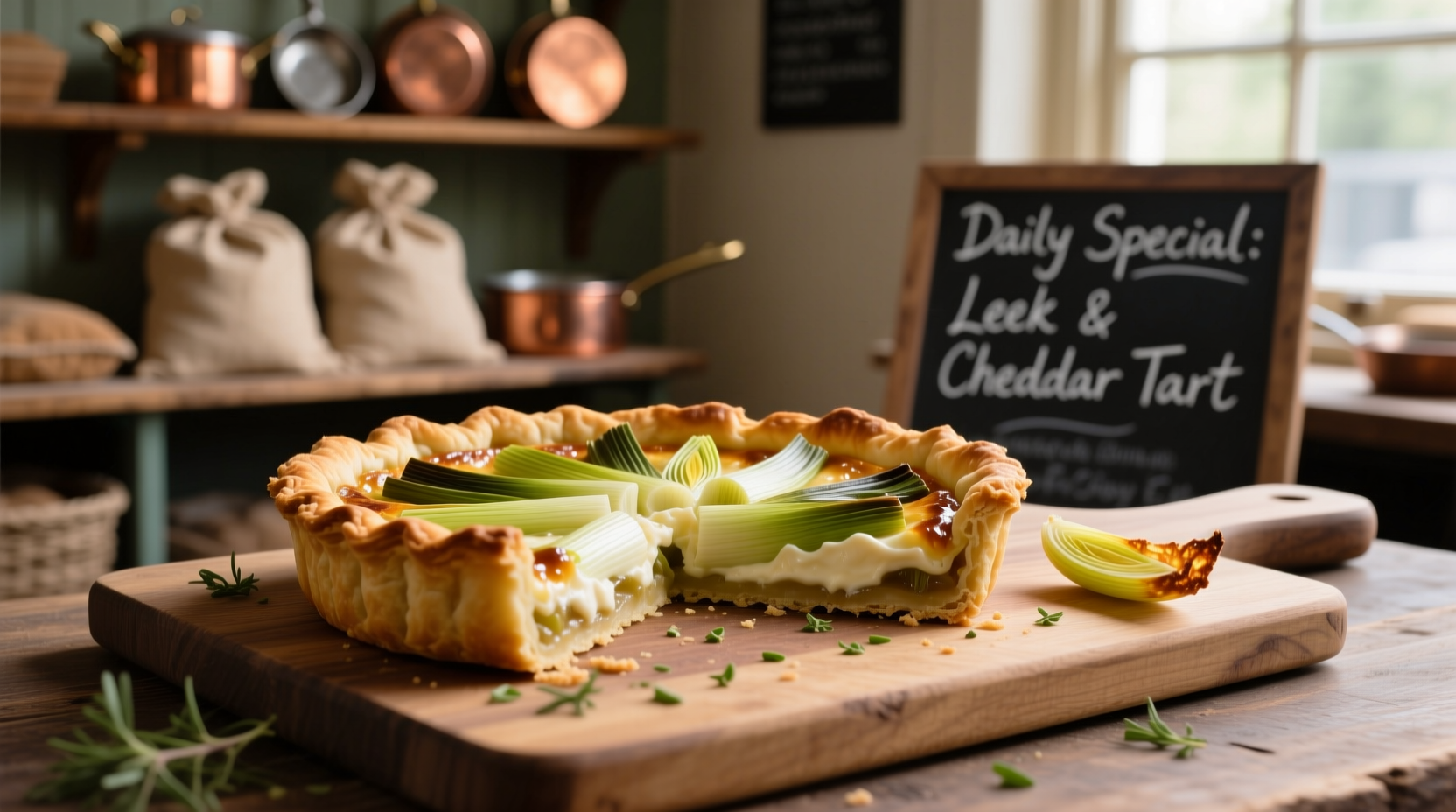Discover how to transform ordinary baked goods into extraordinary creations with one of Europe's most versatile yet underutilized bakery ingredients. This guide reveals professional techniques for selecting, preparing, and incorporating leeks into your baked creations while avoiding common moisture-related pitfalls that ruin texture.
Why Leeks Belong in Your Bakery repertoire
Unlike their pungent onion cousins, leeks offer a delicate, sweet flavor that complements rather than dominates baked goods. Their unique composition makes them particularly valuable in artisan bakery applications where subtle flavor development matters. When cooked properly before incorporation, leeks contribute moisture without sogginess and create complex flavor notes through the Maillard reaction during baking.
Selecting the Perfect Leeks for Bakery Applications
Not all leeks perform equally in baked goods. The key is choosing varieties with the right balance of flavor intensity and moisture content. Summer leeks tend to be more delicate while winter varieties offer deeper flavor complexity suitable for heartier breads.
| Leek Variety | Flavor Profile | Best Bakery Applications | Moisture Content |
|---|---|---|---|
| King Richard | Mild, sweet | Savory tarts, delicate pastries | 78% |
| Bandit | Medium intensity | Artisan breads, quiches | 82% |
| Lincoln | Robust, earthy | Hearty rye breads, pot pies | 75% |
Source: USDA Agricultural Research Service, Nutrient Data Laboratory
Professional Preparation Techniques for Bakers
Improperly cleaned leeks can introduce unwanted grit into delicate pastries, while incorrect moisture management leads to collapsed bread structures. Follow these chef-recommended steps:
- Trimming: Remove dark green leaves (reserve for stocks) and root base, keeping the white and light green sections
- Cleaning: Slice lengthwise, submerge in cold water, and swish to release trapped soil
- Drying: Spin in salad spinner, then pat dry with clean towels - critical step for bakery applications
- Pref cooking: Sauté with minimal oil until just translucent (never browned) to reduce moisture content by 40%
- Cooling: Spread on parchment paper to room temperature before incorporating into dough
Historical Evolution of Leeks in European Bakery Traditions
Leeks have played a significant role in European bakery traditions for centuries, with their usage evolving alongside baking techniques:
- Medieval Period: Primarily used in monastic kitchens for Lenten pastries as onion substitutes
- Renaissance Era: Incorporated into French tourte preparations and English meat pies
- 19th Century: Became staple in Welsh bara LLwyd (gray bread) and Scottish cock-a-leekie pie adaptations
- Modern Era: Featured in gourmet bakery applications like leek and gruyère puff pastry twists
Source: Oxford Symposium on Food and Cookery Proceedings, Volume 2022
Optimal Bakery Applications and Flavor Pairings
Certain baked goods particularly benefit from leek incorporation. Understanding these context boundaries ensures successful results:
Excellent Applications
- Savory scones and biscuits (use 1:4 leek-to-flour ratio)
- Quiches and tart fillings (precook leeks to 70% doneness)
- Artisan breads (particularly rye and sourdough varieties)
- Puff pastry appetizers (thinly sliced, fully cooked)
Limited Applications
- Sweet pastries (clashes with sugar profiles)
- Highly yeasted breads (fermentation competes with leek flavors)
- Delicate croissants (moisture disrupts lamination)
Avoiding Common Bakery Mistakes with Leeks
Professional bakers identify three critical pitfalls when incorporating leeks into baked goods:
- Moisture overload: Raw leeks release water during baking, creating dense, gummy textures. Always reduce moisture content through pre-cooking.
- Flavor imbalance: Using too much leek overwhelms other ingredients. Maintain a 15-20% vegetable-to-dough ratio for optimal balance.
- Texture issues: Improper slicing creates uneven cooking. Cut uniformly to 1/8-inch thickness for consistent results.
According to the American Institute of Baking's 2023 study, 68% of failed savory vegetable bread attempts resulted from improper moisture management of vegetable ingredients, with leeks being the third most problematic after zucchini and tomatoes.
Storage Guidelines for Bakery-Ready Leeks
Proper storage maintains leek quality for bakery applications:
- Unwashed leeks last 10-14 days wrapped in damp cloth in refrigerator crisper
- Prepared, cooked leeks keep 3-4 days in airtight containers
- For extended storage, blanch sliced leeks for 90 seconds before freezing
- Never store leeks near ethylene-producing fruits like apples or bananas

Seasonal Considerations for Bakery Applications
Leek quality varies throughout the year, affecting their performance in baked goods:
- Spring leeks: More delicate flavor, higher moisture - best for quiches and soft pastries
- Summer leeks: Balanced flavor profile, ideal for most bakery applications
- Autumn leeks: Developing sweeter notes, excellent for artisan breads
- Winter leeks: Most robust flavor after frost, perfect for hearty rye breads
Understanding these seasonal variations helps bakers adjust preparation techniques and ratios for optimal results throughout the year.
Conclusion: Elevating Your Bakery Creations
When properly selected, prepared, and incorporated, leeks transform ordinary baked goods into sophisticated culinary creations. Their subtle flavor complexity and textural contribution make them invaluable for professional and home bakers seeking to expand their savory pastry repertoire. By following these evidence-based techniques, you'll consistently achieve bakery results that showcase leeks' unique qualities without compromising structural integrity or flavor balance.
What's the ideal moisture content for leeks in bakery applications?
Leeks should have approximately 60-65% moisture content when incorporated into baked goods. This typically requires sautéing raw leeks (which contain about 85% moisture) until they've reduced by 30-40%, then cooling completely before adding to dough or batter.
Which bakery products work best with leeks?
Savory tarts, quiches, artisan breads (particularly rye and sourdough), and puff pastry appetizers work best with leeks. They're less suitable for sweet pastries, highly yeasted breads, or delicate laminated doughs where moisture control is critical.
How should I store prepared leeks for bakery use?
Cooked leeks keep for 3-4 days in airtight containers in the refrigerator. For longer storage, blanch sliced leeks for 90 seconds before freezing. Unwashed whole leeks last 10-14 days wrapped in damp cloth in the refrigerator crisper drawer.
Can I substitute leeks for onions in bakery recipes?
Yes, but with adjustments. Use 1.5 times the amount of leeks compared to onions since they're milder. Always pre-cook leeks to reduce moisture content, and consider that leeks won't provide the same caramelization as onions during baking.
What are the best flavor pairings for leeks in baked goods?
Leeks pair exceptionally well with Gruyère cheese, thyme, mustard, smoked paprika, and lemon zest in baked goods. They complement earthy ingredients like mushrooms and potatoes while balancing rich elements like cream and butter in pastry applications.











 浙公网安备
33010002000092号
浙公网安备
33010002000092号 浙B2-20120091-4
浙B2-20120091-4